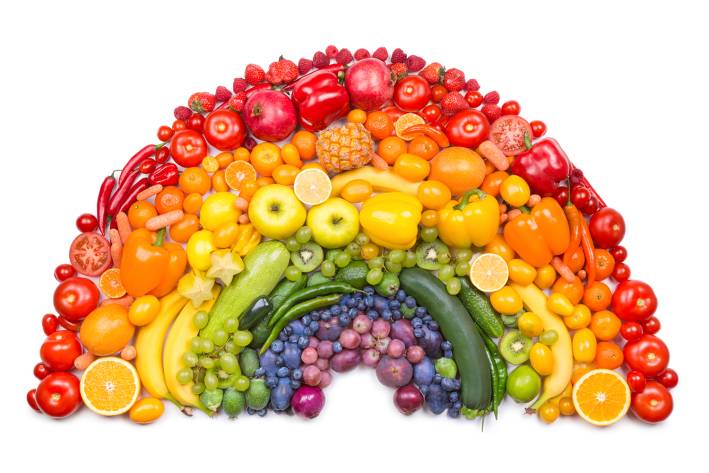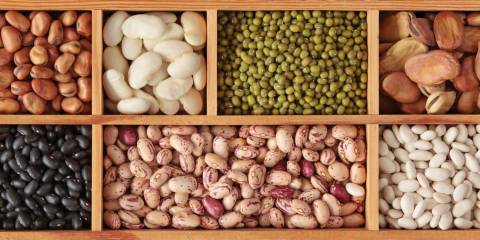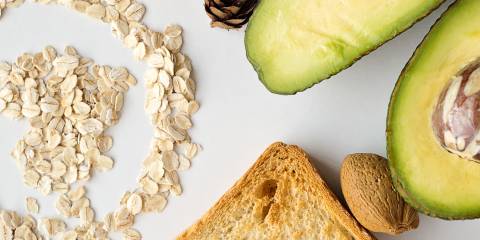The Power of Antioxidants in Your Food
The principal theory of aging proposes that oxygen free radicals disrupt cellular metabolism and are the root cause of chronic disease. Reactive oxygen species (ROS) are rogue molecules generated as a natural by-product of energy production within cells. We aren’t entirely unprotected against ROS assault because nature provided us with an internal antioxidant system to neutralize them. But as a person ages, the level of free radicals increases beyond what the internal antioxidant system can neutralize, which leads to oxidative stress. Here’s where antioxidants from your diet are needed to boost antioxidant defenses.
There are distinct classes of antioxidants, each with a unique way to protect the body. Attempting to isolate a single antioxidant in the prevention or reversal of disease has eluded scientists because antioxidants work within a kind of "buddy system."
Studies have consistently shown that the beneficial effect of fruits and vegetables may be due to the synergistic effects of their components (pigmented phytochemicals) in their natural food matrix. Fruits and vegetables of a similar color contain the same phytochemicals. Might certain color groups make up a "designer" diet plan to prevent a particular disease? Read about the benefits associated with different colors below and look for foods that may address your specific needs.
The Color Green
Broccoli sprouts are a good source of sulforaphane, a health-promoting compound. This phytonutrient activates the internal antioxidant network to reduce oxidative stress and inflammation; hallmarks of Type 2 diabetes. In a recent study, 81 people with Type 2 diabetes consumed a broccoli sprout extract powder for four weeks. The group was divided into thirds with one-third consuming 10 grams (g) a day of broccoli powder. Another third received 5 g a day, and the rest were given a placebo. Blood samples taken at the beginning of the trial and after four weeks showed a significant reduction in biomarkers of oxidative stress and inflammation among those taking the broccoli sprout powder.
-
Cabbages
Brussel sprouts, broccoli, green cabbages
-
Dark, Leafy Green Veggies
Kale and spinach
-
Lettuces
Endive and other lettuces
-
Other Fruits and Veggies
French beans, green sweet pepper, honeydew melon, kiwi
The Color Orange/Yellow
Fruits and veggies of these hues are loaded with carotenoids with powerful anticancer and antiaging benefits. These fat-soluble compounds protect plants from sun and environmental damage. In humans, carotenoids perform similar functions, altering harmful metabolic processes including inflammation, cancer cell growth, and other degenerative processes.
-
Citrus Fruits
Citrus fruit juices, grapefruit, orange, tangerine
-
Deep Orange Fruits and Veggies
Cantaloupe, carrot, carrot juice, peach, apricot
The Color Purple/Red
Resveratrol is a phytonutrient found in purple grapes, grape juice, and red wine. It has been linked with reduced cardiovascular, cerebrovascular, and peripheral vascular risk, as well as reduced risk of cancer. The Cardiovascular Research Team at the University of Connecticut found that resveratrol, red wine, grapes, and certain compounds in white wine activate longevity genes.
Pomegranate juice is rich in certain flavonoids that are potent antioxidants. A recent pilot study of eight rheumatoid arthritis patients revealed striking benefits from drinking 10 milliliters of POM pomegranate extract juice daily for 12 weeks. A 62 percent reduction in the number of tender joints were reported.
-
Berries
Cherries, grapes, grape and berry juice, strawberries
-
Red Veggies
red beet, red beet juice, red cabbage, red sweet pepper, tomato, tomato juice and sauce
The Color White
A recent Dutch study reported that those who ate the most white fruits (like pears and apples) and vegetables (such as cauliflower, cucumbers, and mushrooms) had the lowest incidence of stroke. Each 25 gram a day increase in white fruit and vegetable consumption was associated with a 9 percent lower risk of stroke. (A single apple is about 120 grams.)
-
Allium Family Bulbs
garlic, leek, onion
-
Hard Fruits
Apples, pears, apple juice and sauce
-
Other White Fruits and Veggies
Banana, cauliflower, cucumber, mushroom





